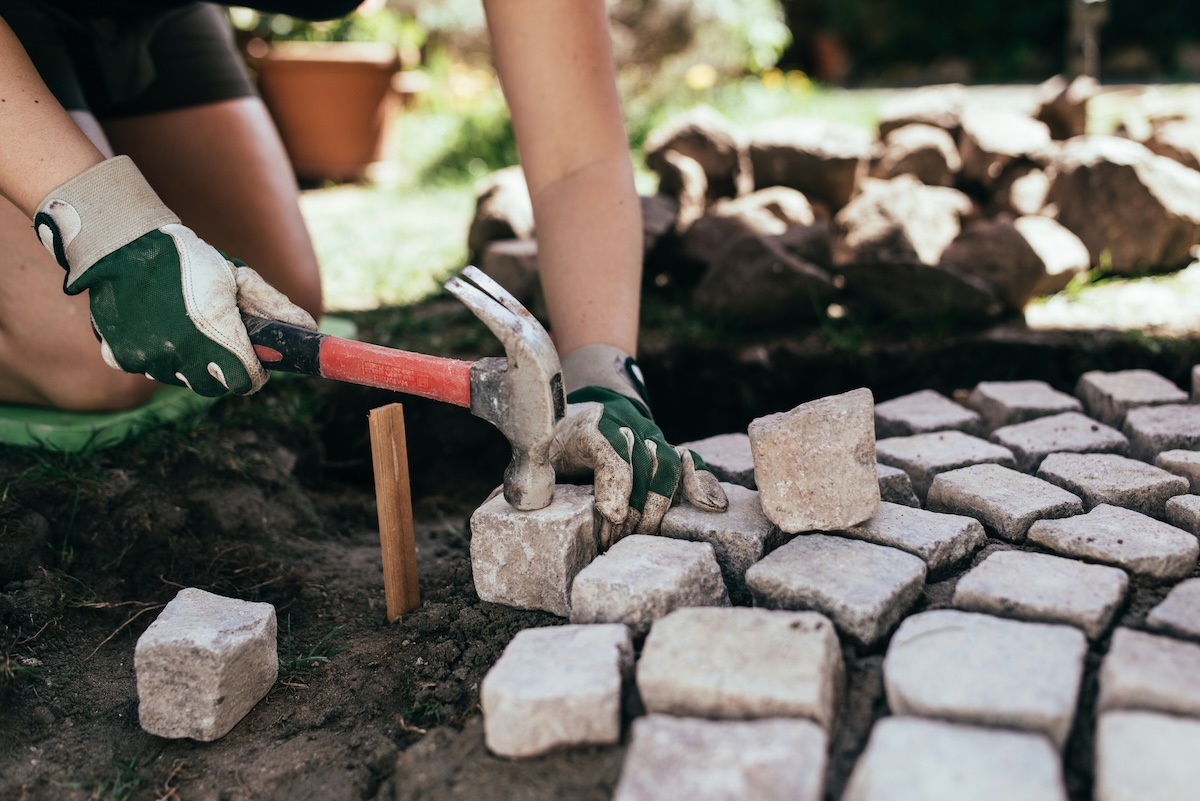

We may earn revenue from the products available on this page and participate in affiliate programs. Learn More ›
A garden is so much more interesting—not to mention approachable—if paths meander gracefully through it. A path is not only a means to get somewhere but it also can offer a journey of experience. And it’s entirely possible to create paths that are not only charming but also affordable.
Using found materials or items picked up inexpensively at home improvement centers or rock yards, you can craft interesting walkways that add visual interest to your garden, while allowing you to segment your landscape any way you like. Get inspired with our cheap DIY garden path ideas below.
1. Mulch
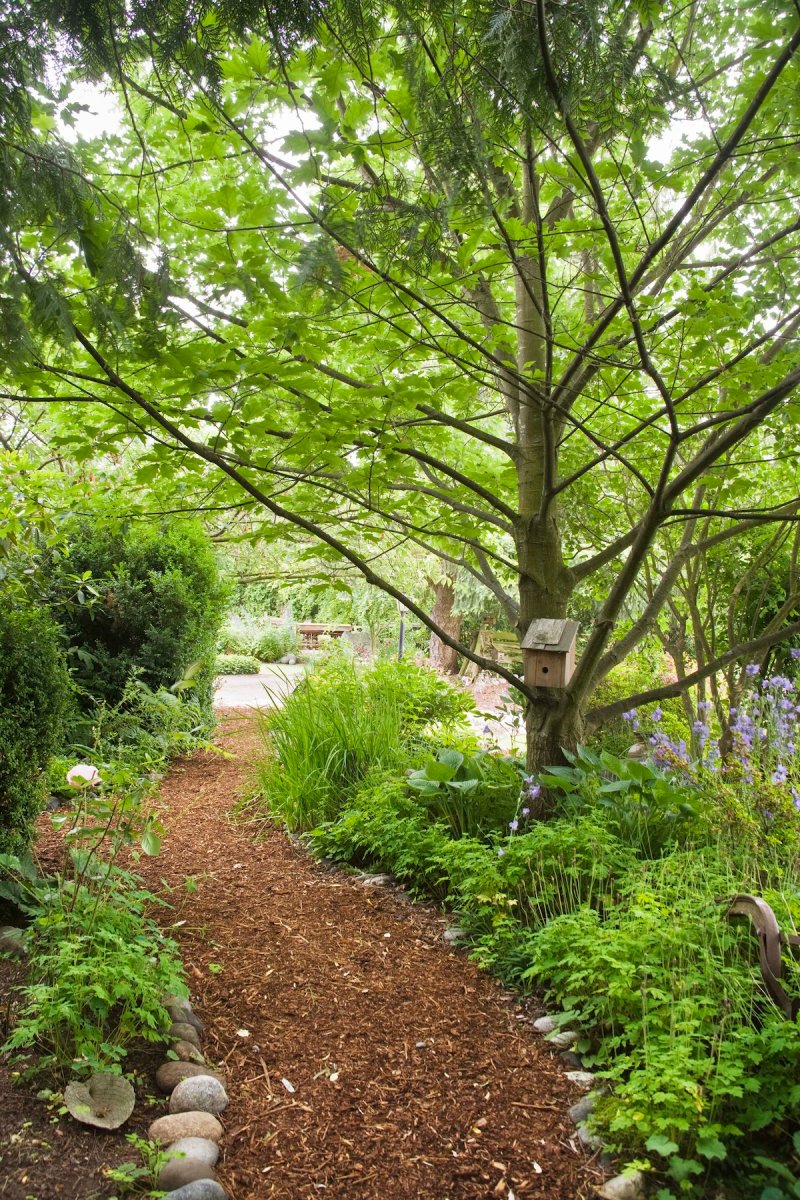
Among casual and woodsy cheap walkway ideas, consider putting down a thick layer of quality mulch between two parallel rows of edging. The edging can contain the mulch, giving you a natural walkway. You can use any of a variety of types of mulch, according to master gardener Louise Senior. “I very much like using cardboard and wood chips, or pine needles for paths,” says Senior, who works as a horticulturalist at Morven Museum & Garden, a national historic landmark in Princeton, New Jersey.
Just keep up with maintaining the edging along your path to keep the mulch contained. You can also consider using large stones you gather from your property, if that’s a possibility, or you can purchase stone fairly affordably from a rock yard. Lengths of tree limbs or trunks also work well as path liners if you’ve recently done some trimming on your property.
2. Brick
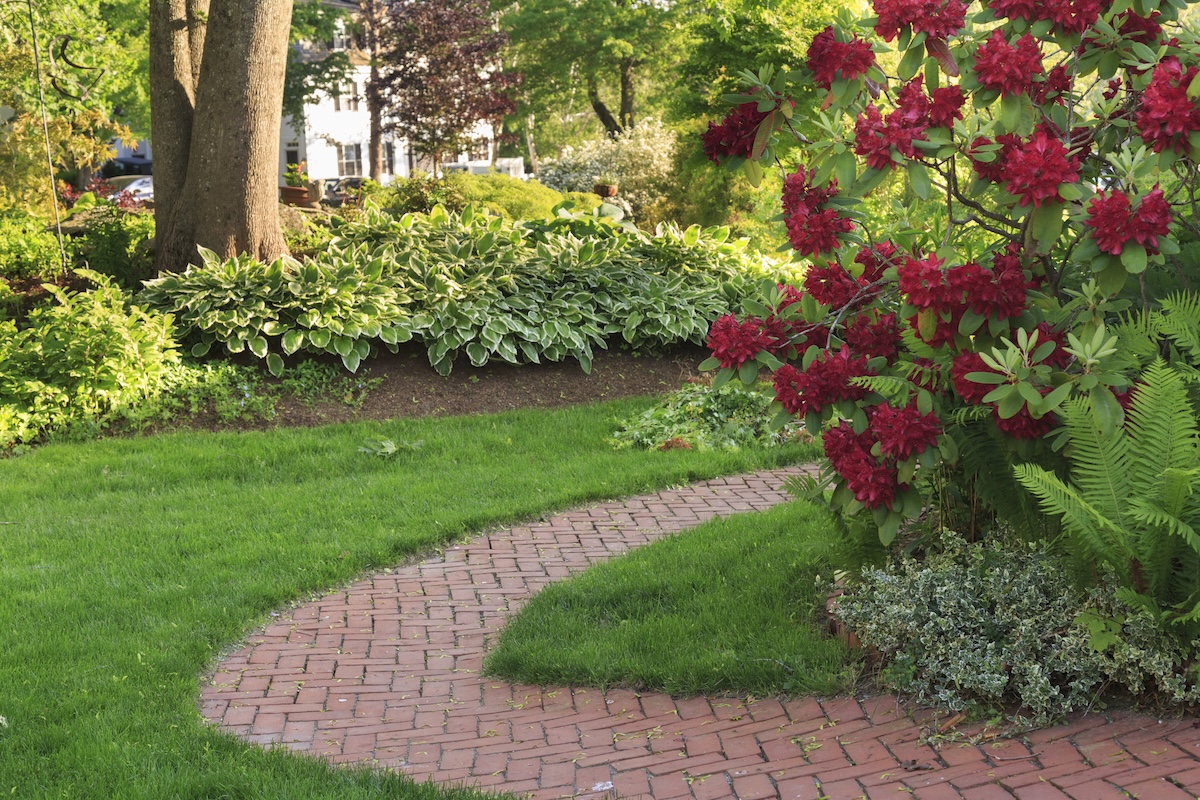
A brick pathway brings a traditional look to a garden pathway. Often you can stay within a tight budget if you can find used brick at a good price through local online classified ads. Or perhaps you have some bricks left over from a home project? If you like the look, it’s ok to mix and match brick types and colors—it adds more character!
3. Stepping Stones

Use square, rectangular, or irregular-shaped paving stones to build a stepping stone path. Home improvement stores often have concrete pavers in various sizes that are quite affordable. And at rock yards, you can find flat stepping stones in many sizes and colors so you can choose what suits your aesthetic. “Don’t be afraid to mix and match textures and tones to add visual interest and create a custom look,” says Joe Raboine, vice president of design at Oldcastle APG, parent company of Belgard, a brand of hardscaping products.
4. Gravel
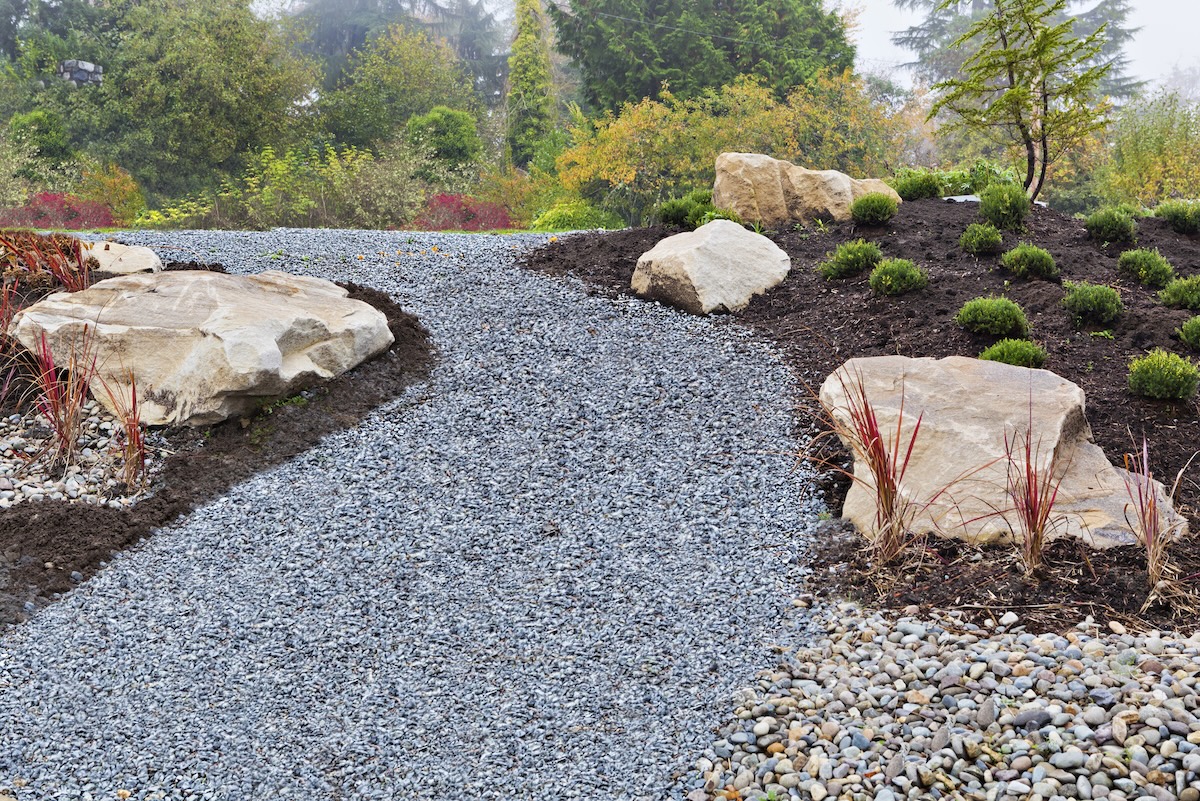
Affordable and readily available, gravel also makes a charming path. Many rock suppliers offer a wide variety of stone colors and sizes, making gravel paths attractive among walkway ideas on a budget. Choose something that matches your aesthetic but that is also easy to walk on. You might want to line your gravel pathway with large stones or landscape edging to keep the gravel from spilling into adjacent areas.
5. Wood
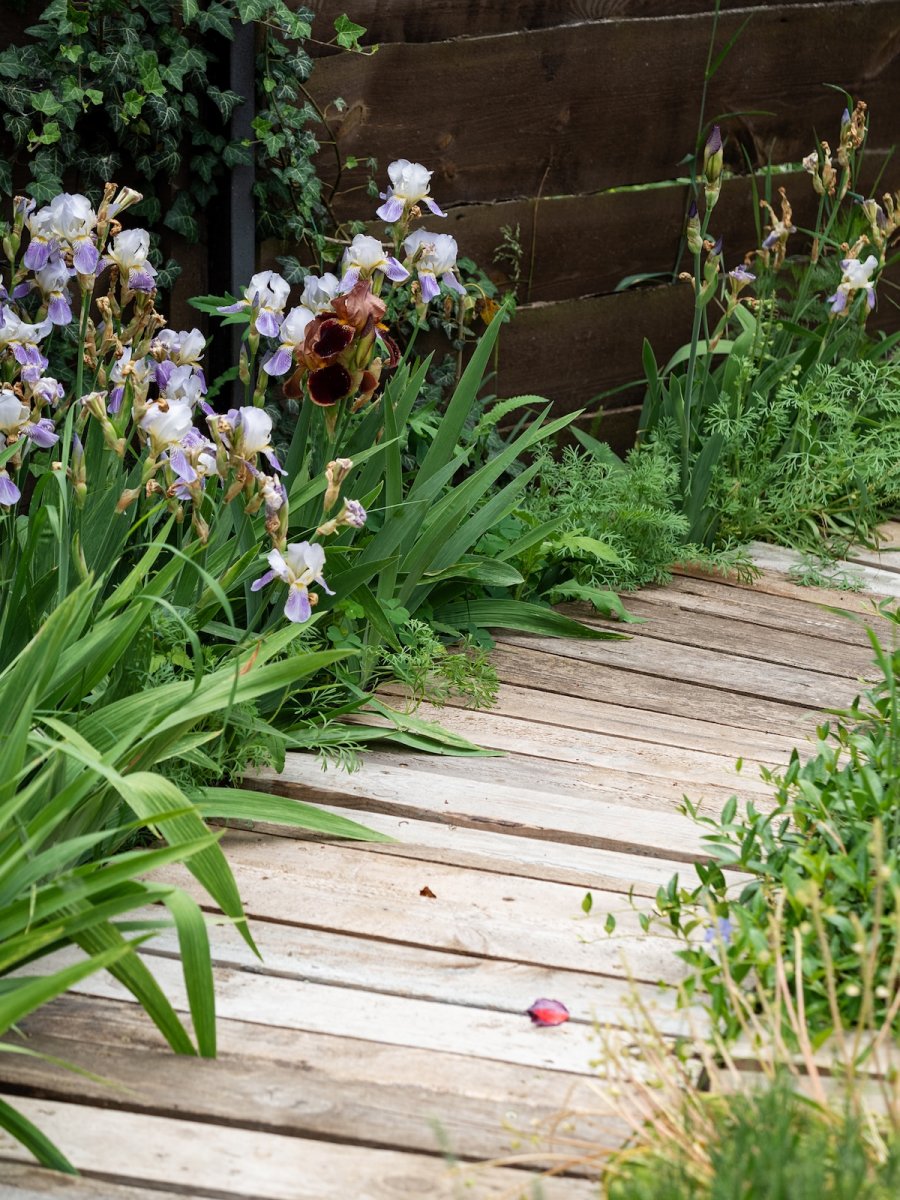
This “boardwalk” path might be a good way to make use of lumber pieces you have left over from another project, particularly if they’re pressure-treated. (Just make sure to flatten the ground within the path zone so it can accept the boards.) Reminiscent of a path or bridge you might find in a national park, walking along a wooden garden path will make you feel like you’re on an outdoor adventure.
6. Stone
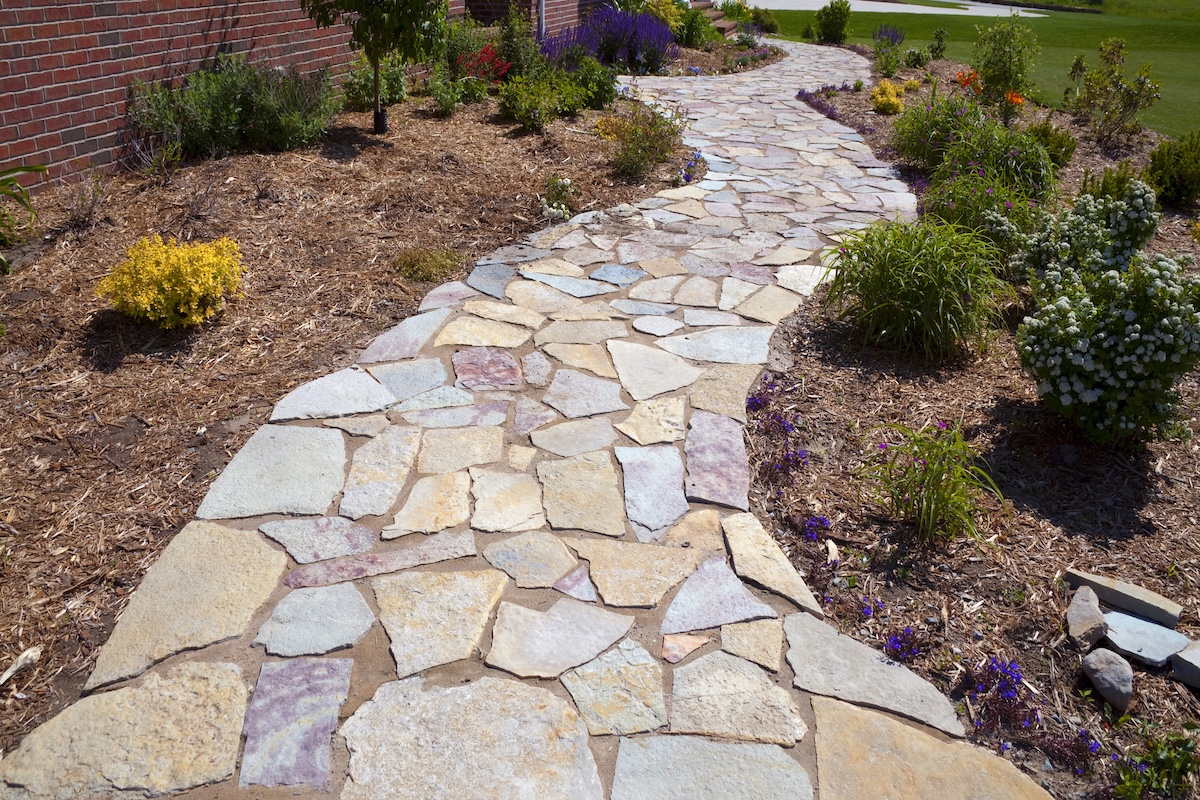
A quintessential stone path is typically made of irregularly shaped flat stones fitted into a bed of sand and gravel to form an intricate and beautiful mosaic pattern. You might be able to get a deal at a stone yard if you’re willing to take a mish-mash of types and colors to create your stone path. This type of path can take a bit of time to craft and fit together, but the results are stunning and rock-solid.
7. Pavers and Gravel
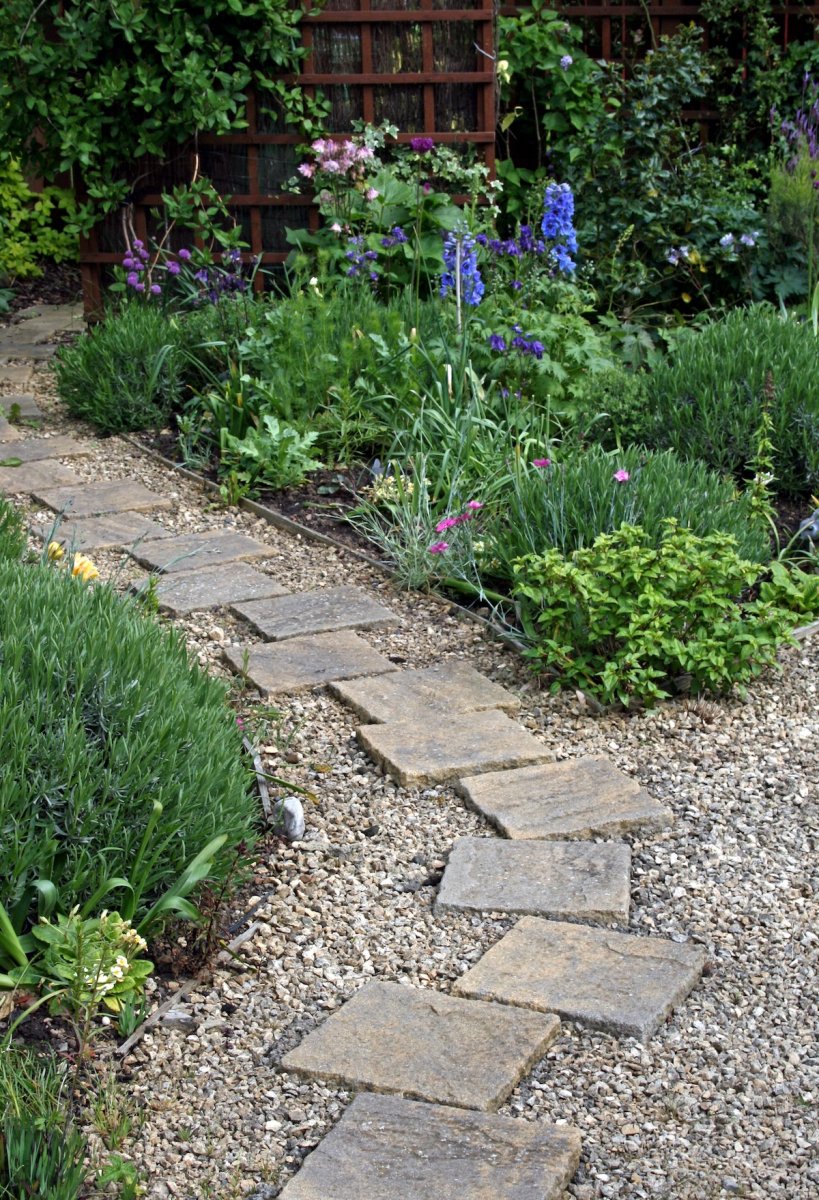
Combine paving stones with gravel to achieve this highly textured and flexible path type. Simply nestle your flat stones into a bed of gravel, taking care to make sure the pavers are level. As with many of these path types, you might want to lay down landscape fabric after you’ve excavated the pathway and before you start applying the building materials. Arrange the stones in any pattern you like, with gaps or no gaps. Feel free to make it your own.
8. Handling a Slope
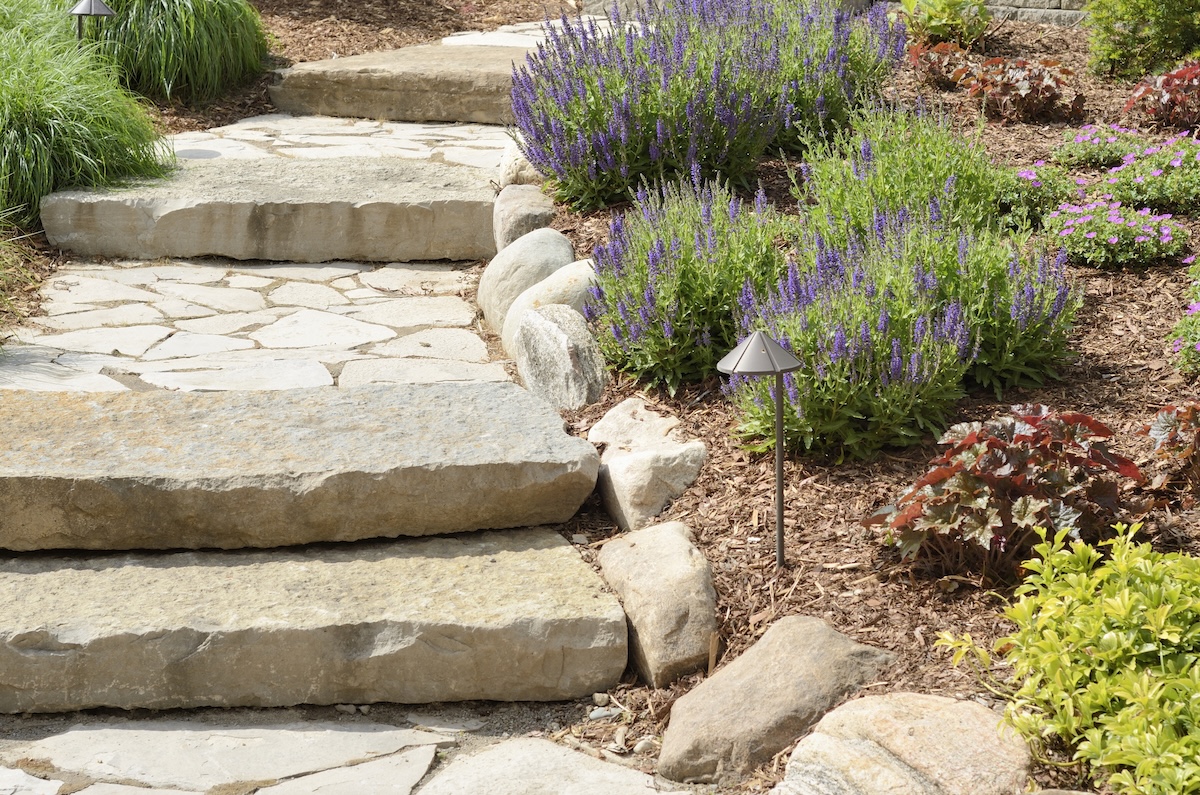
Build a path on a slope by using pavers or flat stones in a mosaic pattern to serve as the “path,” and using large, rectangular-cut stones to accommodate the slope’s rise. Edge your new path/stairway with large stones to contain adjacent landscaping, if necessary. Incidentally, greenery growing up against a hardscape path adds softness and texture within your landscape.
